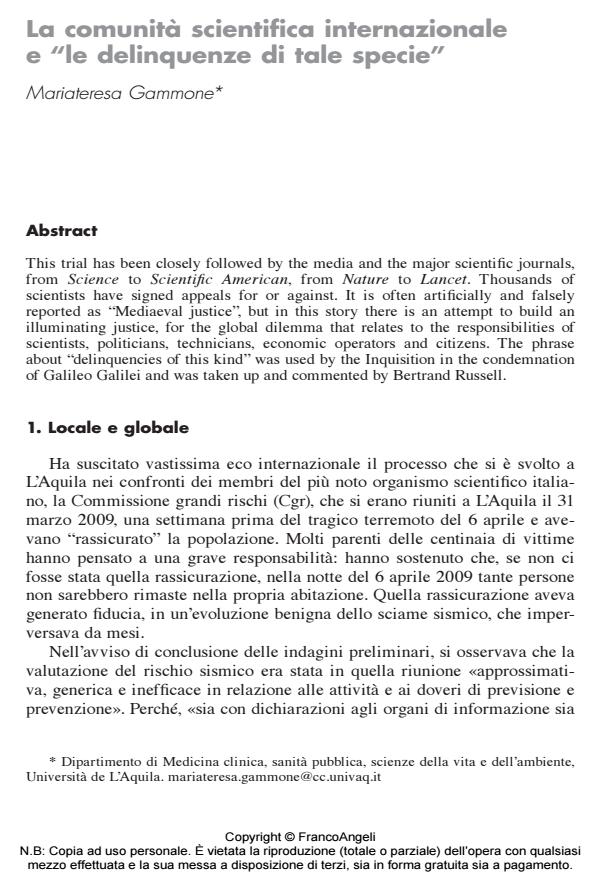La comunità scientifica internazionale e "le delinquenze di tale specie"
Titolo Rivista SICUREZZA E SCIENZE SOCIALI
Autori/Curatori Mariateresa Gammone
Anno di pubblicazione 2013 Fascicolo 2013/2
Lingua Italiano Numero pagine 17 P. 165-181 Dimensione file 282 KB
DOI 10.3280/SISS2013-002013
Il DOI è il codice a barre della proprietà intellettuale: per saperne di più
clicca qui
Qui sotto puoi vedere in anteprima la prima pagina di questo articolo.
Se questo articolo ti interessa, lo puoi acquistare (e scaricare in formato pdf) seguendo le facili indicazioni per acquistare il download credit. Acquista Download Credits per scaricare questo Articolo in formato PDF

FrancoAngeli è membro della Publishers International Linking Association, Inc (PILA)associazione indipendente e non profit per facilitare (attraverso i servizi tecnologici implementati da CrossRef.org) l’accesso degli studiosi ai contenuti digitali nelle pubblicazioni professionali e scientifiche
This trial has been closely followed by the media and the major scientific journals, from Science to Scientific American, from Nature to Lancet. Thousands of scientists have signed appeals for or against. It is often artificially and falsely reported as "Mediaeval justice", but in this story there is an attempt to build an illuminating justice, for the global dilemma that relates to the responsibilities of scientists, politicians, technicians, economic operators and citizens. The phrase about "delinquencies of this kind" was used by the Inquisition in the condemnation of Galileo Galilei and was taken up and commented by Bertrand Russell.
Mariateresa Gammone, La comunità scientifica internazionale e "le delinquenze di tale specie" in "SICUREZZA E SCIENZE SOCIALI" 2/2013, pp 165-181, DOI: 10.3280/SISS2013-002013